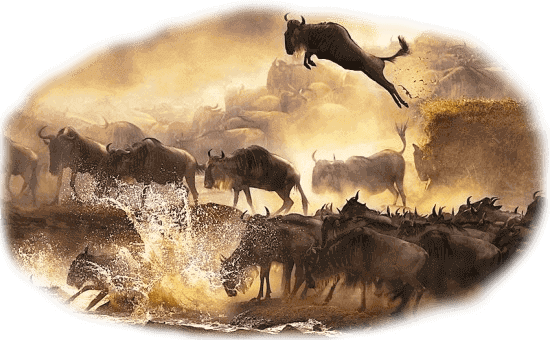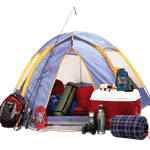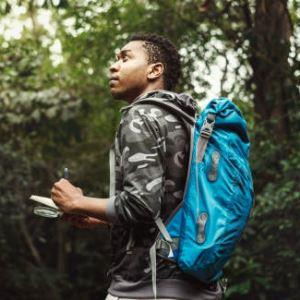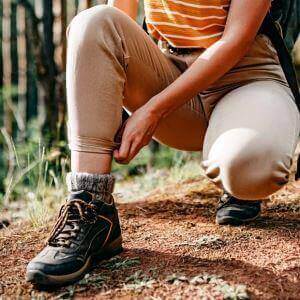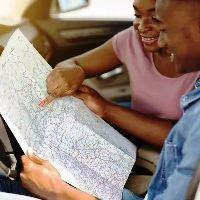 Dreaming of lions on the plains, elephants by the waterhole, and endless savannahs stretching to the horizon? A Kenya safari is one of the most unforgettable adventures you can experience, and planning your journey from Stockholm makes the trip even more exciting. From booking flights to choosing the best game reserves, every detail matters to ensure your safari is seamless, safe, and full of wonder. Your journey begins with a long-haul flight from Stockholm to Nairobi, Kenya’s bustling capital and the gateway to East Africa’s wildlife havens. Flights typically require one or two layovers and take around 10 to 15 hours. Once in Nairobi, you can easily connect to major parks such as the Masai Mara, Amboseli, or Tsavo either by road or domestic flight. Planning your itinerary around these destinations allows you to witness iconic wildlife scenes, including the Great Migration or elephants with Mount Kilimanjaro in the background. Timing is crucial. Kenya has two main dry seasons from June to October and January to February. These months offer the best wildlife viewing opportunities, as animals gather around limited water sources. For photography lovers or those hoping to see dramatic predator-prey interactions, this is the prime time to visit. If you want a quieter experience, consider traveling just before or after the peak season for fewer crowds and reduced rates. Packing appropriately can greatly impact your safari comfort. Neutral-colored, lightweight clothing is ideal for blending into the environment and staying cool. Don’t forget essentials like a wide-brim hat, sunglasses, sunscreen, and sturdy shoes. Early mornings and evenings in the bush can get surprisingly chilly, so a warm fleece or jacket is also necessary. A good camera and binoculars will help you capture every moment of the action. Health and safety should be a top priority. Make sure your vaccinations are up to date, including yellow fever and typhoid, and take malaria prophylaxis as prescribed. Travel insurance is highly recommended. Book your safari with a reputable operator who prioritizes safety and conservation. Follow all instructions from your guides, respect wildlife boundaries, and avoid venturing out alone. This Stockholm to Kenya safari travel guide provides a strong foundation for your planning process. Whether you’re a first-time traveler to Africa or an experienced globetrotter, preparing well ensures that your safari will be a life-changing journey filled with awe-inspiring wildlife, vibrant culture, and memories that last a lifetime. Kenya is a destination where nature, adventure, and heritage converge. From tracking lions across the open savannah to listening to Maasai legends around a campfire, every day offers a new and powerful experience. Beyond the thrill of wildlife viewing, your safari introduces you to a variety of ecosystems, from the acacia-dotted plains of the Masai Mara to the flamingo-filled waters of Lake Nakuru. You'll have the chance to interact with local communities, taste regional cuisine, and gain a deeper understanding of conservation efforts that protect endangered species. A well-planned safari goes beyond sightseeing it's an opportunity to connect with nature, support sustainable tourism, and gain a new appreciation for Earth's biodiversity. By considering logistics, timing, safety, and personal comfort, you can transform this bucket-list trip into a deeply personal and transformative journey that will stay with you long after you return to Stockholm.
Dreaming of lions on the plains, elephants by the waterhole, and endless savannahs stretching to the horizon? A Kenya safari is one of the most unforgettable adventures you can experience, and planning your journey from Stockholm makes the trip even more exciting. From booking flights to choosing the best game reserves, every detail matters to ensure your safari is seamless, safe, and full of wonder. Your journey begins with a long-haul flight from Stockholm to Nairobi, Kenya’s bustling capital and the gateway to East Africa’s wildlife havens. Flights typically require one or two layovers and take around 10 to 15 hours. Once in Nairobi, you can easily connect to major parks such as the Masai Mara, Amboseli, or Tsavo either by road or domestic flight. Planning your itinerary around these destinations allows you to witness iconic wildlife scenes, including the Great Migration or elephants with Mount Kilimanjaro in the background. Timing is crucial. Kenya has two main dry seasons from June to October and January to February. These months offer the best wildlife viewing opportunities, as animals gather around limited water sources. For photography lovers or those hoping to see dramatic predator-prey interactions, this is the prime time to visit. If you want a quieter experience, consider traveling just before or after the peak season for fewer crowds and reduced rates. Packing appropriately can greatly impact your safari comfort. Neutral-colored, lightweight clothing is ideal for blending into the environment and staying cool. Don’t forget essentials like a wide-brim hat, sunglasses, sunscreen, and sturdy shoes. Early mornings and evenings in the bush can get surprisingly chilly, so a warm fleece or jacket is also necessary. A good camera and binoculars will help you capture every moment of the action. Health and safety should be a top priority. Make sure your vaccinations are up to date, including yellow fever and typhoid, and take malaria prophylaxis as prescribed. Travel insurance is highly recommended. Book your safari with a reputable operator who prioritizes safety and conservation. Follow all instructions from your guides, respect wildlife boundaries, and avoid venturing out alone. This Stockholm to Kenya safari travel guide provides a strong foundation for your planning process. Whether you’re a first-time traveler to Africa or an experienced globetrotter, preparing well ensures that your safari will be a life-changing journey filled with awe-inspiring wildlife, vibrant culture, and memories that last a lifetime. Kenya is a destination where nature, adventure, and heritage converge. From tracking lions across the open savannah to listening to Maasai legends around a campfire, every day offers a new and powerful experience. Beyond the thrill of wildlife viewing, your safari introduces you to a variety of ecosystems, from the acacia-dotted plains of the Masai Mara to the flamingo-filled waters of Lake Nakuru. You'll have the chance to interact with local communities, taste regional cuisine, and gain a deeper understanding of conservation efforts that protect endangered species. A well-planned safari goes beyond sightseeing it's an opportunity to connect with nature, support sustainable tourism, and gain a new appreciation for Earth's biodiversity. By considering logistics, timing, safety, and personal comfort, you can transform this bucket-list trip into a deeply personal and transformative journey that will stay with you long after you return to Stockholm.
Quick Kenya Safari Planning Guide From Stockholm
| Item | Details |
|---|---|
| Best Time to Visit | Late June to October; January to February |
| Flights from Stockholm | Average 10–15 hours with one or two stopovers |
| Must-Visit Safari Parks | Masai Mara, Amboseli, Tsavo, Lake Nakuru |
| Key Vaccinations | Yellow fever, Hepatitis A/B, Typhoid, Malaria prophylaxis |
| Safari Essentials | Neutral clothes, hat, sunscreen, binoculars, camera, power bank |
| Currency & Tipping | Kenyan Shilling (KES); 10–15% tipping customary |
| Safety Tips | Use guides, follow rules, avoid isolated areas, carry ID at all times |
Best Time to Visit Kenya for a Memorable Safari Experience for Swedish Visitors
Kenya offers exceptional safari experiences year-round, but choosing the right time to visit can elevate your adventure. The country's climate is generally warm, but rainfall and wildlife patterns vary throughout the year. For travelers seeking the most rewarding game-viewing opportunities, timing your visit during the dry seasons is key. The primary dry seasons run from late June to October and from January to February. These months are ideal because wildlife tends to concentrate around dwindling water sources, making sightings more frequent and more dramatic. During the June to October window, the weather is pleasant and relatively cool, which enhances comfort during long game drives. More importantly, this period coincides with the Great Migration in the Masai Mara, one of the world’s most breathtaking wildlife spectacles. Millions of wildebeest, zebras, and gazelles move through the plains, pursued by predators like lions and crocodiles. It's a scene straight out of a nature documentary and a dream for wildlife photographers. The shorter dry season in January and February is also a great time to visit, especially for birdwatching and spotting newborn animals. The scenery is lush following the short rains of November and December, adding a vibrant green backdrop to your safari. While the wet seasons (March to May and November) are less popular, they offer lower rates and fewer tourists. However, some roads in the parks may become difficult to navigate, and animals can be harder to spot due to thicker vegetation. If you're considering this time of year, be sure to choose lodges with good accessibility and guides who can adapt your itinerary to changing weather. The best time to go depends on your personal preferences and what you hope to experience. Whether you crave predator action, stunning photography, or quiet immersion in nature, Kenya has something to offer. As you plan, be sure to include the top Kenya national parks to visit on safari, such as Masai Mara, Amboseli, and Tsavo, each with its own unique ecosystems and wildlife encounters. A well-timed safari in Kenya promises breathtaking landscapes, unforgettable wildlife, and rich cultural moments that will stay with you long after the journey ends. As the sun rises over the vast savannahs, you're likely to witness nature's drama unfold in real time a lioness stalking her prey, elephants playfully interacting at a waterhole, or a herd of zebras crossing the golden plains. Every day brings new encounters and stories that shape your experience beyond the usual tourist trail. Your safari connects you deeply with the land and its people. Many guided tours include visits to local communities where you can learn about traditional customs, music, and cuisine. Conversations with your guides often open a window into conservation efforts and the challenges of balancing tourism with wildlife protection. These human interactions add layers of meaning to your journey, making it not just a vacation but a profound learning experience. You'll also enjoy a range of landscapes that vary dramatically across regions from the open grasslands of the Masai Mara to the volcanic terrain of Tsavo and the picturesque lakes of the Rift Valley. Whether you're camping under the stars or staying in a luxury lodge, the sensory richness of Kenya its sounds, smells, and sights ensures your adventure is etched in memory long after your return home.
When Should I Plan my Kenya Safari Trip for the Best Wildlife Viewing?
Planning the timing of your Kenya safari is crucial to ensure a fulfilling wildlife experience. Kenya is a year-round safari destination, but the dry seasons offer the most reliable conditions for game viewing. The primary dry periods are from June to October and from January to February. During these months, water sources are scarce, drawing animals to rivers, watering holes, and exposed plains. This concentration increases your chances of seeing large herds and predators up close, making it an ideal time for photographers and wildlife enthusiasts alike. The most famous event during the dry season is the Great Migration in the Masai Mara, typically peaking between July and October. Millions of wildebeest, zebras, and gazelles thunder across the savannah, pursued by lions, cheetahs, and crocodiles. If you’re hoping to witness this breathtaking spectacle, timing your visit around this window is a must. Traveling just before or after peak season can be more affordable and less crowded. Many Swedes looking to explore Africa on a budget should consider this shoulder season to save on flights and accommodation while still enjoying rewarding wildlife encounters. These months also present some of the most budget-friendly Kenya safari options for Swedes. The short dry season in January and February offers lush scenery following the rains, making the landscape especially photogenic with blooming flora and vivid green grasslands. During this time, many animals give birth, offering a unique chance to witness playful young antelopes, elephants, and even lion cubs with their mothers. These intimate moments in the wild create deeply emotional and memorable experiences for visitors. Additionally, the birdwatching is exceptional, with both native and migratory species on full display, adding color and song to the safari landscape. While the game might not be as concentrated as during the longer dry season, wildlife sightings are still abundant and diverse. Morning game drives often reveal animals basking in the golden sunlight or foraging before the day heats up. Afternoons may be ideal for relaxing back at camp or enjoying guided nature walks, depending on the lodge or conservancy you stay in. The atmosphere is quieter, the parks less crowded, and you get a more personal, immersive experience. Each season brings its own unique rhythm to the land, influencing animal movement, behavior, and vegetation. Consider your interests photography, birding, or seeing baby animals to decide if the short dry season is the right time for your Kenya safari adventure.
What to Pack for Your Kenya Safari Trip From Stockholm
Packing for a Kenya safari from Stockholm requires thoughtful preparation to ensure both comfort and practicality in the wild. Start with lightweight, breathable clothing in neutral tones like khaki, beige, or olive to stay cool and blend into the natural surroundings. Avoid dark blue or black, as these colors attract tsetse flies. Long-sleeved shirts and trousers are recommended for sun protection and to ward off insects, especially during early morning and evening game drives. Layering is key. While daytime temperatures can be warm, mornings and nights may be surprisingly cool. Pack a warm fleece or jacket, particularly if you’re visiting during the June to October dry season. A wide-brim hat, sunglasses, and high-SPF sunscreen will protect you from the intense equatorial sun. Comfortable walking shoes or boots are essential for bush walks or lodge-based activities. Your safari gear should include a good pair of binoculars, a high-quality camera with extra batteries and memory cards, and a power bank or portable charger. Keep your electronics and important items in a waterproof daypack to protect them during travel. Personal items like insect repellent, reusable water bottles, basic medications, and travel-sized toiletries are must-haves. Make sure your travel documents, including passport, visa, travel insurance, and vaccination certificates, are safely stored and easily accessible. For those joining group safari tours in Kenya for Swedish travelers, some tour operators may provide packing checklists or even essential gear like binoculars, reusable water bottles, and insect repellent upon booking. This added convenience is especially helpful for travelers who may be unfamiliar with safari conditions or want to travel light from Stockholm. However, it’s still crucial to confirm in advance what your safari company includes to avoid duplicating items or missing key essentials. Many group tours offer pre-departure support, including orientation calls or informational guides, which cover packing tips, safety briefings, and travel logistics. Take advantage of these resources to tailor your packing list and feel confident about your preparation. It’s also wise to ask whether the accommodations provide items like towels, toiletries, and insect nets so you can minimize your luggage without compromising on comfort. Being part of a group tour also provides opportunities to share or borrow supplies, such as camera gear or medical kits, especially if you’re traveling with other seasoned safari-goers. Having the right equipment whether personal or shared can make your wildlife encounters more enriching. From spotting elusive leopards in the trees to capturing breathtaking sunsets over the savannah, being prepared ensures you don’t miss a moment of your adventure. With thoughtful planning and the support of a reputable tour operator, you’ll be fully equipped for an extraordinary safari experience in Kenya. These tours handle the logistical complexities of travel, such as transportation, accommodation, park entry fees, and meals, so you can focus on enjoying the moment. Many operators provide expert guides who offer insight into animal behavior, local ecology, and cultural history, enriching your experience far beyond what you'd get on your own. For Swedish travelers, language support and cultural familiarity from the tour group can enhance comfort and ease throughout the journey. Whether you're in a 4x4 game vehicle spotting a pride of lions or enjoying a sundowner overlooking the savannah, having well-organized support lets you soak in the magic of the wild without stress. A group dynamic also encourages camaraderie and shared experiences, making your adventure even more memorable. When you travel with a trusted provider, safety and sustainability are prioritized, allowing you to engage deeply and responsibly with Kenya's remarkable landscapes and wildlife.
What Clothes and Gear Should I Bring For a Safari in Kenya?
Packing for a Kenya safari isn't just about looking the part it's about staying comfortable, safe, and ready for any adventure that comes your way. With Kenya's mix of climates, early game drives, midday heat, and cooler evenings, your wardrobe and gear should reflect adaptability. You want clothing that will protect you from the sun, insects, and rough terrain while keeping you cool and dry throughout the day. At the same time, the right accessories and equipment can enhance your overall experience, allowing you to focus fully on the breathtaking sights and sounds of the African bush.
- Lightweight, Neutral-Colored Clothing: Breathable, quick-dry fabrics in khaki, beige, or olive help regulate your body temperature and keep insects at bay. Avoid bright colors that stand out or dark tones that attract biting flies, especially tsetse flies.
- Layered Outerwear: Mornings can be chilly and evenings brisk, especially during the dry season. A warm fleece, hoodie, or insulated jacket will keep you comfortable as temperatures shift. Layers also help you adapt throughout the day without overpacking.
- Wide-Brim Hat and Sunglasses: The equatorial sun is intense. A hat with a wide brim and neck flap will provide maximum coverage, and UV-protected sunglasses reduce glare during game drives.
- Sturdy Walking Shoes or Hiking Boots: Essential for comfort and stability on uneven terrain. Choose shoes with good ankle support and a firm grip. Make sure they are well broken-in before travel.
- Binoculars and Camera Gear: Binoculars allow you to spot wildlife at a distance, from elusive leopards in trees to birds in flight. A DSLR or mirrorless camera with a good zoom lens is perfect for capturing memorable shots. Don’t forget spare batteries, memory cards, and a dustproof camera bag.
- Insect Repellent and Sunscreen: Insects like mosquitoes can carry disease, so repellent with DEET or picaridin is essential. Pair it with broad-spectrum sunscreen of at least SPF 30 to shield your skin from strong UV rays.
- Travel Essentials: Bring a reusable water bottle to stay hydrated, essential medications in a compact travel kit, hand sanitizer, and a lightweight, waterproof daypack. Make photocopies of important documents like your passport and travel insurance, and keep them separately from the originals.
A smartly packed bag lets you fully immerse yourself in your safari whether it's marveling at a herd of elephants or enjoying a sunset over the plains without distraction or discomfort.
Essential Kenya Safari Travel Tips For First-Time Visitors from Sweden
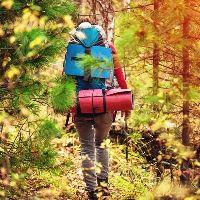 Kenya offers a magical first encounter with Africa's wild heart. But if it's your first time planning a safari, it can be daunting to navigate the array of options, health precautions, and local customs. With the right knowledge, however, your journey can be as smooth as it is spectacular. Here are key tips tailored for first-time visitors to help you get the most out of your Kenya safari. Booking with a reputable safari company is a crucial first step. Look for operators who prioritize safety, have knowledgeable guides, and support eco-conscious tourism. They’ll not only handle logistics like park fees and transfers but also ensure your experiences are ethically and sustainably designed. Vaccinations for yellow fever, typhoid, and hepatitis, along with malaria prophylaxis, should be discussed with your doctor well in advance. Travel insurance is a non-negotiable safeguard. Once on safari, follow your guide's instructions closely. The African wilderness is as wild as it is beautiful, and guides are trained to keep you safe. Don’t step out of the vehicle during game drives unless explicitly allowed, and avoid loud noises or sudden movements that may disturb animals. Cultural respect is also part of the journey. Engage with local communities respectfully, ask before taking photos, and try to learn a few basic Swahili phrases. Carrying some local currency (Kenyan Shillings) is useful for tipping or buying small souvenirs. Most major lodges accept credit cards, but cash is king in rural areas. When it comes to choosing accommodation, comfort and access matter. The best Kenya safari lodges for first-time travelers are those that balance proximity to wildlife with high safety standards, quality amenities, and a strong focus on guest education. Whether you're staying in a tented camp overlooking the savannah or a lodge with views of Mount Kilimanjaro, your base should be a place of both rest and discovery. Pace yourself. Safaris are immersive and often physically demanding. Give yourself time between game drives to relax and reflect. Journaling, photography, and conversations around the campfire will enrich your experience in ways that go beyond wildlife sightings. A Kenya safari is more than a vacation it's a deeply transformative journey that touches your spirit and stays with you for a lifetime. The moment you step onto the sun-warmed plains, hear the distant call of a lion, or witness elephants moving in serene silence across the savannah, you realize you are part of something far greater than yourself. This experience awakens a new appreciation for the natural world and our place within it. For many first-time travelers, it redefines travel. It’s no longer about ticking off a destination but about immersion, learning, and connection. You’ll return home with more than photographs; you’ll carry with you stories of resilience, harmony, and beauty drawn from one of the world’s richest ecosystems. Safaris also forge deep emotional bonds. Whether it's bonding with fellow travelers around a fire, exchanging laughs with your guide, or sharing a silent moment with a wild animal just meters away, these interactions foster a sense of unity and humility. The diversity of Kenya’s landscapes from misty hills to golden grasslands offers moments of awe that slow time and clear the mind. With thoughtful preparation, cultural curiosity, and a spirit of adventure, your first safari may not just be a once-in-a-lifetime experience it might be the beginning of a lifelong passion for Africa and its untamed beauty.
Kenya offers a magical first encounter with Africa's wild heart. But if it's your first time planning a safari, it can be daunting to navigate the array of options, health precautions, and local customs. With the right knowledge, however, your journey can be as smooth as it is spectacular. Here are key tips tailored for first-time visitors to help you get the most out of your Kenya safari. Booking with a reputable safari company is a crucial first step. Look for operators who prioritize safety, have knowledgeable guides, and support eco-conscious tourism. They’ll not only handle logistics like park fees and transfers but also ensure your experiences are ethically and sustainably designed. Vaccinations for yellow fever, typhoid, and hepatitis, along with malaria prophylaxis, should be discussed with your doctor well in advance. Travel insurance is a non-negotiable safeguard. Once on safari, follow your guide's instructions closely. The African wilderness is as wild as it is beautiful, and guides are trained to keep you safe. Don’t step out of the vehicle during game drives unless explicitly allowed, and avoid loud noises or sudden movements that may disturb animals. Cultural respect is also part of the journey. Engage with local communities respectfully, ask before taking photos, and try to learn a few basic Swahili phrases. Carrying some local currency (Kenyan Shillings) is useful for tipping or buying small souvenirs. Most major lodges accept credit cards, but cash is king in rural areas. When it comes to choosing accommodation, comfort and access matter. The best Kenya safari lodges for first-time travelers are those that balance proximity to wildlife with high safety standards, quality amenities, and a strong focus on guest education. Whether you're staying in a tented camp overlooking the savannah or a lodge with views of Mount Kilimanjaro, your base should be a place of both rest and discovery. Pace yourself. Safaris are immersive and often physically demanding. Give yourself time between game drives to relax and reflect. Journaling, photography, and conversations around the campfire will enrich your experience in ways that go beyond wildlife sightings. A Kenya safari is more than a vacation it's a deeply transformative journey that touches your spirit and stays with you for a lifetime. The moment you step onto the sun-warmed plains, hear the distant call of a lion, or witness elephants moving in serene silence across the savannah, you realize you are part of something far greater than yourself. This experience awakens a new appreciation for the natural world and our place within it. For many first-time travelers, it redefines travel. It’s no longer about ticking off a destination but about immersion, learning, and connection. You’ll return home with more than photographs; you’ll carry with you stories of resilience, harmony, and beauty drawn from one of the world’s richest ecosystems. Safaris also forge deep emotional bonds. Whether it's bonding with fellow travelers around a fire, exchanging laughs with your guide, or sharing a silent moment with a wild animal just meters away, these interactions foster a sense of unity and humility. The diversity of Kenya’s landscapes from misty hills to golden grasslands offers moments of awe that slow time and clear the mind. With thoughtful preparation, cultural curiosity, and a spirit of adventure, your first safari may not just be a once-in-a-lifetime experience it might be the beginning of a lifelong passion for Africa and its untamed beauty.
How Can Swedes Stay Safe and Enjoy Safari Trips in Kenya?
Traveling from Sweden to Kenya for a safari promises a once-in-a-lifetime adventure, but safety should be at the forefront of your planning. With a few practical steps and the right mindset, Swedes can stay safe while enjoying the magic of the African wilderness. Start by choosing a trusted and experienced safari operator. Look for companies that are certified by tourism authorities, prioritize sustainability, and are well-reviewed by other international travelers. These operators typically provide trained guides, secure transport, and carefully selected accommodations that meet international safety standards. Health preparation is equally important. Consult with a travel clinic at least six weeks before departure. Required vaccinations typically include yellow fever, and you should also be protected against typhoid, hepatitis A and B, and rabies. Malaria prophylaxis is also recommended. Always carry a basic medical kit with personal prescriptions, insect repellent, and high-SPF sunscreen. Once in Kenya, adhere closely to your guide’s instructions during game drives and walks. The animals may appear calm, but they are wild and unpredictable. Never exit your vehicle unless permitted, and avoid loud noises or sudden movements. It’s best to view wildlife quietly and from a safe distance. When exploring towns or cities, dress modestly, avoid displaying valuables, and use official transport options. In lodges or camps, always lock your belongings in safes or secure them with your guide. Travel insurance is essential. It should cover medical evacuation and trip interruptions, especially since many safari destinations are in remote areas. Share your itinerary and local contact details with family or friends in Sweden, and stay connected using reliable mobile or satellite communication if available. Respect for local culture enhances both safety and enjoyment. Learn basic Swahili greetings, ask before taking photos of people, and engage respectfully with communities. Kenyans are warm and welcoming, and cultural exchange adds great depth to your experience. By combining thoughtful preparation with responsible behavior, Swedes can fully immerse themselves in Kenya’s beauty while staying safe, informed, and respectful. The result is not only a successful safari but a meaningful journey rich in connection and discovery.
FAQs About Planning A Memorable Safari in Kenya from Sweden
Planning a Kenya safari from Sweden may seem like a big task, but with the right guidance, it becomes a thrilling and stress-free process. Kenya's stunning landscapes, extraordinary wildlife, and rich cultural heritage make it a top choice for adventurous Swedes seeking a deeper travel experience. Whether you're curious about the ideal travel times, necessary documentation, or what to pack for the bush, preparing well will ensure your safari is both safe and unforgettable. From flights and safety to wildlife hotspots, these FAQs offer quick answers tailored to Swedish travelers. If you're wondering how to plan a Kenya safari trip from Stockholm, these insights will help you begin confidently and wisely.
- What Is the Best Time of Year to Go on a Kenya Safari? The best time to visit Kenya is during the dry seasons: June to October and January to February. These months offer optimal wildlife viewing as animals gather around water sources, making them easier to spot during game drives.
- Do I Need a Visa to Travel from Sweden to Kenya? Yes, Swedish citizens must apply for an eVisa before arriving in Kenya. The process is quick and can be done through the official eCitizen portal. Apply at least two weeks in advance to allow for processing.
- What Should I Pack for a Kenya Safari? Bring light, breathable clothing in neutral tones, plus a wide-brim hat, insect repellent, sunscreen, and good walking shoes. Essentials like binoculars, a camera, power banks, travel adapters, and medications are also must-haves for a successful trip.
- Are There Direct Flights from Stockholm to Kenya? There are no direct flights at the moment. However, several airlines offer convenient one-stop connections through cities like Istanbul, Doha, Frankfurt, or Amsterdam. Expect a total travel time of 10 to 15 hours.
- Is It Safe for Swedish Travelers to Go on Safari in Kenya? Yes, Kenya is generally safe for tourists, especially when safaris are booked through reputable tour operators. Stick to organized tours, follow guide instructions, and practice basic safety measures like securing your belongings.
- What Are the Top Safari Destinations in Kenya for First-Timers? Masai Mara is a favorite for its Big Five sightings and the Great Migration. Amboseli National Park is known for its elephant herds and views of Mount Kilimanjaro. Lake Nakuru offers rhinos and vibrant birdlife, while Tsavo and Samburu provide scenic diversity and fewer crowds.
These clear, concise answers help simplify the planning process and make your safari journey from Sweden to Kenya smooth, informed, and unforgettable. By addressing key concerns with detail, this guide empowers travelers to confidently handle visa requirements, plan flights, pack effectively, and choose the best safari destinations. Understanding when to travel, how to stay safe, and what experiences await in places like Masai Mara and Amboseli provides clarity and excitement for first-time safari-goers. Whether you're looking for Big Five sightings, cultural immersion, or just an escape into unspoiled nature, these practical tips equip you with the foundational knowledge to plan and enjoy every step. With proper preparation, travelers from Sweden can look forward to a seamless, deeply rewarding Kenyan safari that combines wild adventure with cultural discovery leaving you with incredible memories and a strong desire to return.
